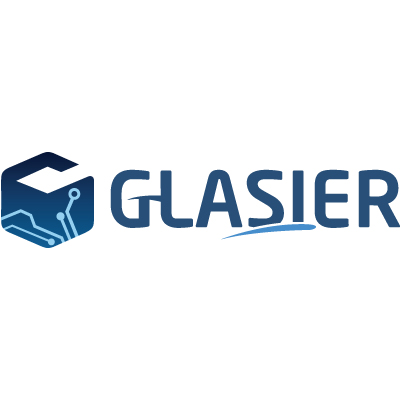Migrating Your Existing App to Flutter: Challenges and Solutions
 Glasier Inc.
Glasier Inc.
Introduction
When it comes to upgrading mobile application technology, choosing the right framework is crucial for enhanced performance, scalability, and future maintenance. Flutter, developed by Google, has emerged as a popular choice for developers looking for efficient cross-platform app development capabilities. Migrating an existing app to Flutter can offer significant advantages, including streamlined development processes and a unified codebase. However, transitioning to a new framework involves considering various technical and strategic challenges.
In this blog, we will explore the common challenges faced during the migration process and provide practical solutions to help ensure a smooth transition. This insight will be particularly useful for businesses and developers planning to upgrade their app's technology by shifting to Flutter.
Also Read: Flutter vs React
Challenges of Migrating Your App to Flutter
Compatibility issues
When migrating an existing app to Flutter, one of the most significant hurdles is ensuring compatibility with the new framework. Flutter uses the Dart programming language, which may lead to conflicts with the original language used in your existing apps, such as Java for Android or Swift for iOS. Moreover, there may be difficulties in integrating third-party libraries and tools that were not initially designed for Flutter. This can result in functional discrepancies and might require additional work to find compatible substitutes or to alter existing ones to function smoothly in the Flutter environment.
Performance concerns
Performance is another critical concern when migrating to Flutter. The framework is designed to facilitate a high level of performance across all platforms, but achieving this requires meticulous planning and execution. Existing applications, especially those with complex back-end interactions or large amounts of data processing, might experience lag or slower response times during the initial phase after migration. Additionally, Flutter's single-threaded model of execution may pose limitations in handling multiple processes simultaneously, which could potentially degrade the app's overall performance if not adequately addressed.
Solutions for a Smooth Transition
Utilizing platform channels for integration
To overcome compatibility issues, one effective technique is using platform channels. Platform channels allow Flutter apps to communicate with the underlying platform, enabling the use of native code and existing platform-specific APIs. This method is particularly useful for accessing features and functionalities that are not natively supported by Flutter. By implementing platform channels, developers can ensure that the migrated app retains its original features and performance capabilities, thus minimizing disruptions caused by the transition.
Code refactoring strategies
Refactoring the existing codebase is a critical step in the migration process. The key is to systematically convert the old code to align with Flutter’s programming standards, ensuring optimized performance and maintainability. Here are several strategies that can be employed:
Incremental Migration: Instead of a complete overhaul, migrate components of the app gradually. This allows for addressing issues in smaller, manageable parts and reduces the risk of significant disruptions.
Clean Architecture: Implementing a clean architecture pattern can simplify the migration process. This involves separating the app’s presentation logic from business logic, making it easier to manage and scale the app.
Dart Packages: Utilize Dart packages for commonly used functions and features. Many packages are available that replicate or replace the functionality of existing libraries in other languages, which can save time and reduce errors during conversion.
Testing and debugging techniques
Thorough testing and debugging are essential to ensure that the app functions correctly post-migration. Here are several techniques that can be employed to enhance the efficiency of this process:
Unit Testing: Write Dart unit tests for critical app functions. Flutter provides a rich set of testing features that enable developers to perform thorough unit tests.
Integration Testing: Integration tests help verify the smooth operation of the app’s integrated components. Flutter's integration testing tools can simulate user interactions and check the behavior of entire systems.
Widget Testing: Flutter’s widget testing is designed to test the UI at the individual widget level. This helps in ensuring that the UI displays as intended and interacts correctly with user inputs.
Continuous Integration (CI): Implementing CI pipelines can automate the process of building, testing, and deploying the Flutter app. This notaries consistency and efficiency throughout the development cycle.
By carefully addressing the challenges and strategically applying these solutions, developers can streamline the migration process and enhance the performance of their Flutter applications. Whether you choose to hire Flutter developers or train your existing team in Dart and Flutter, it's crucial to apply these practices to ensure a successful transition from your old app framework to Flutter.
Key Considerations When Hiring Flutter Developers
When transitioning your existing app to Flutter, selecting the right team is crucial. Understanding what qualities and competencies your Flutter developers need can make the difference between a smooth transition and a problematic one.
Skills and Expertise Needed
The essential skills for Flutter developers include a strong command of Dart, Flutter's programming language. Besides proficiency in Dart, developers should have a good grasp of declarative UI writing style, as it is central to Flutter. Look for experience with handling both frontend and backend aspects of app development, since Flutter encompasses both.
Developers should also have familiarity with version control tools like Git, debugging skills, and an ability to write clean, well-documented code that follows coding standards and best practices. Important too is a knack for problem-solving and a thorough understanding of integrating APIs and third-party services. Lastly, familiarity with app testing, deployment, and scalability is advantageous, ensuring the app performs well across multiple platforms and devices.
Understanding of Flutter vs. Swift
When migrating an app, particularly one initially written in Swift for iOS, understanding the differences between Flutter and Swift becomes pivotal. While Swift is a robust language specifically developed by Apple for macOS, iOS, watchOS, and tvOS, Flutter is Google's UI toolkit for crafting natively compiled applications for mobile, web, and desktop from a single codebase.
Developers need to appreciate Swift's focus on speed and performance for Apple ecosystems, whereas Flutter provides high performance as well as flexibility and the ability to operate across platforms seamlessly. This knowledge will aid in making informed decisions on how to approach the migration, especially if maintaining aspects of Swift code or integrating Flutter within existing Swift applications.
Evaluating Experience in App Migration Projects
One of the significant considerations when hiring developers for migrating an application to Flutter is their experience with similar projects. Experienced developers are likely to foresee potential challenges and plan effectively for them. They should demonstrate:
Prior successful migration projects: Look for case studies or references.
Understanding of maintaining data integrity and user experience during transition.
Skills in custom widget creation, necessary for replicating or enhancing existing app features in Flutter.
Capability inefficient state management and understanding of architectural patterns.
Proven experience not only in Flutter but also in previous platform-specific technologies (like Swift or Java) can be a clear indicator of the ability to handle complex migration scenarios effectively. Choosing a developer or team with a rounded skill set and migration experience can drastically reduce the hurdles encountered during the transition to Flutter.
Conclusion
Migrating an existing application to Flutter involves overcoming various challenges including ensuring compatibility and dealing with potential performance issues. However, by carefully planning your approach, considering key factors like maintaining UI consistency ensuring data compatibility, and leveraging the extensive resources available in the Flutter community, these hurdles can be effectively managed.
Get in touch with Glasier Inc. if you would like to you want to talk about your options or need more assistance making your decision. If you wish to hire Flutter developers or are looking to hire Swift developers, Glasier can provide expert assistance and support for your iOS app development project.
Subscribe to my newsletter
Read articles from Glasier Inc. directly inside your inbox. Subscribe to the newsletter, and don't miss out.
Written by

Glasier Inc.
Glasier Inc.
Our Glasierinc is a renowned hybrid app development company providing custom hybrid application development services to businesses or startups, Glasierinc can create hybrid mobile apps that combine native capabilities while employing the power of React Native, Flutter Apps. AngularJS, Node.JS.